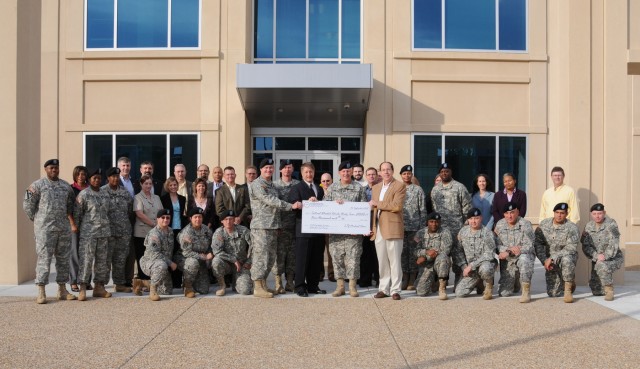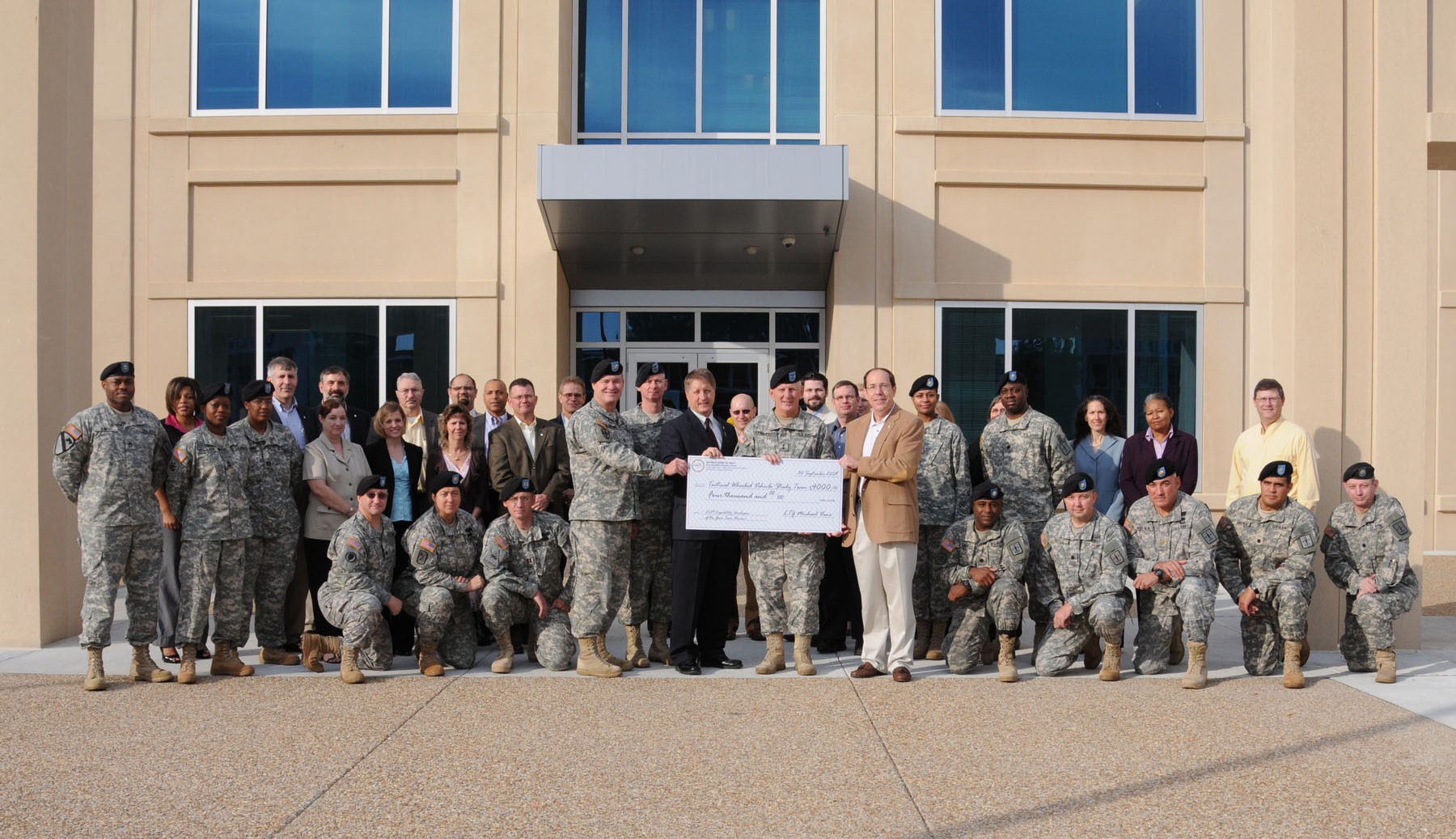
FORT LEE, Va. (Oct. 14, 2009) -- For one group of Combined Arms Support Command, Sustainment Center of Excellence employees, an additional tasking became an award-winning study that will change how the U.S. Army performs distribution within brigades while saving billions of dollars.
Fourteen members of the Force Development Directorate recently won the U.S. Army Training and Doctrine Command, Army Capabilities Integration Center's Capability, Combat Developer of the Year Award for their team submission titled Tactical Wheel Vehicle Study.
The team assembled in February to study the Army's tactical wheel vehicles needs, said Col. David Williams, FDD director.
"There was a perception out there that perhaps the Army has too many trucks and as we modernize the Army's fleet we need to determine 'do we need all these trucks in our organizations','" Williams said.
The team set out to gather information, analyze their data and provide an answer to that question and within months, they had worked with nearly every unit their study would affect.
They collected records from eight modular designed brigades and after compiling all the information the team concluded the Army could reduce the wheeled tactical vehicle inventory in some organizations, and increase it in others. The data also showed some organizations had the wrong equipment for their mission.
The study started with just the Infantry BCT and within a month the team was ready to brief Army Capabilities Integration Center leadership and the Army G4 on their initial work.
"We looked at where we could take reductions but could still maintain effectiveness, while increasing the capability and the capacity in those units," Williams said. "Basically we were just looking to optimize truck allocations while accounting for lessons learned in theater."
Lt. Gen. Mitchell H. Stevenson, Army G4, and Lt. Gen. Michael Vane, ARCIC director, thought the pilot work was on track and decided not only to continue the existing study but also to expand it, Williams said.
"As we continued to work our time line, we also focused on the organizational designs to identify the requirements for the personnel and equipment that make up the military's units," Williams said. "We realized in our methodology and in our work not only were we saving in tactical wheel vehicles, we could save in personnel spaces that could be used for other priority missions."
This undertaking isn't the type of work the team does on a regular basis; each has their own area of specialty. Their combined abilities formed a team that would do something that had never been attempted by any single proponent before.
"To undertake something of this magnitude ... in hindsight I think this will be viewed as historic," said Jeff Martin, FDD deputy director. "The catalyst was the convergence of two issues ... the question on the number of vehicles and the effort to align force structure to current operations represented a change in our aim point."
The team identified excess vehicle requirements, opportunities for modernization and fundamentally changed the way they perform distribution in brigades.
"The magnitude and scope grew rapidly to become what many believed was an insurmountable effort that could not be executed on the given time line," said Martin. "However, the team worked to deliver their results on time."
The savings identified from the team's study is currently being documented, which is the first step in implementing the plans. The Army's fleet will be reduced by approximately 17,000 tactical wheel vehicles across the modular brigades evaluated and the requirements for tactical wheel vehicles could shrink by over $2 billion. Additionally, the study represents approximately $5 billion in modernization cost avoidance over a span of more than 20 years.
Most importantly the study revealed many of the improvements could be made by reallocating existing inventories and allowing modernization to target specific vehicle types. The end result will create a smaller, younger and more reliable optimized fleet to support Soldiers.
Maj. Gen. James E. Chambers, CASCOM, SCoE and Fort Lee commanding general, nominated the core members of the team because the magnitude and results of the study, said Williams.
The award program was implemented by ARCIC leaders to promote and recognize innovation, improvement and maximized efficiency in capability development products. Award nominees are responsible for identifying, assessing and documenting changes in doctrine, organization, training, materiel, leadership and education, personnel and facilities.
"We are very proud of the core team working on the study and the entire directorate who picked up the slack on other projects," said Williams.
For their efforts the team received time off awards and a check for $4,000, as well as walking away knowing their study will benefit Soldiers on the battlefields.

Social Sharing